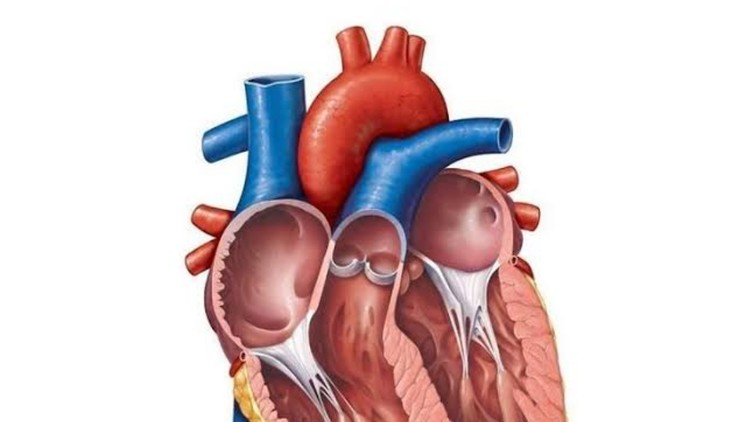
Pulmonary Hypertension : Definition Pathophysiology, clinical Features and Management
What you will learn
Definition of pulmonary Hypertension
Clinical Features of Pulmonary Hypertension
Pathogenesis of Pulmonary Hypertension
Management
Why take this course?
🫀 Mastering Pulmonary Hypertension: Pathophysiology and Management 🫂
Course Overview
Pulmonary hypertension is a complex and often misunderstood condition that affects the pulmonary arteries and right side of the heart. It’s not just high blood pressure, but a serious health issue that requires comprehensive understanding for effective management and treatment. 🩺✨
What is Pulmonary Hypertension?
- Definition: A type of high blood pressure that targets the lungs’ arteries and right heart chambers. It’s characterized by elevated blood pressure within the pulmonary circulation, leading to various health challenges and risks. 🏥
- Impact: Over time, if untreated or improperly managed, it can cause severe strain on the heart, ultimately leading to heart failure and other life-threatening complications.
Understanding Symptoms and Progression
Symptoms of pulmonary hypertension can be subtle at first but become more pronounced as the condition progresses. Recognizing these signs is crucial for early intervention and management. 🚨
- Common Symptoms:
- Shortness of breath, especially during physical activity or at rest 🏃♂️😫
- Blue skin tone or lips due to low oxygen levels 🤫🥽
- Chest pressure or pain 🌊💔
- Dizziness or fainting spells 💫🎈
- A fast pulse or heartbeat that feels unusually strong 🕺💓
- Extreme fatigue and weakness 😲💪
- Swelling in the legs, ankles, and abdomen (edema) ⏫🤒
Note: These symptoms can resemble other conditions. It’s essential to consult with a healthcare professional for proper diagnosis.
‘;
}});
The Pathophysiology of Pulmonary Hypertension
Pulmonary hypertension involves complex physiological changes that lead to elevated pressures within the pulmonary circuit. 🧫🏋️♀️
- Normal Circulation: Blood from the right ventricle flows through the pulmonary artery to the lungs, where it picks up oxygen and releases carbon dioxide.
- Pulmonary Vascular Changes: In pulmonary hypertension, the lung’s blood vessels can become narrowed, blocked, or destroyed, affecting blood flow and pressure. 🪨❌
- Pathophysiological Progression: Over time, these changes can lead to increased resistance in the pulmonary arteries, right ventricular hypertrophy (thickening of the heart muscle), and eventually heart failure if left unchecked.
Classification of Pulmonary Hypertension
Pulmonary hypertension is categorized into five groups based on its underlying cause, which is essential for tailored treatment approaches. 📚🔍
- Group 1: Pulmonary arterial hypertension (PAH), a rare disease that affects young adults and children, often with no apparent cause. 🧑⚕️🤰
- Group 2: Pulmonary hypertension due to left heart disease, which includes conditions like mitral valve stenosis or regurgitation, and heart failure. 💓↔️🏃♂️
- Group 3: Pulmonary hypertension due to lung diseases and/or hypoxiaemia (chronic obstructive pulmonary disease, interstitial lung disease, sleep apnea, etc.). 🏖️👣
- Group 4: Chronic thromboembolic pulmonary hypertension (CTEPH), often arising from blood clots in the lungs. ☁️❌
- Group 5: Pulmonary hypertension due to other causes, such as congenital systemic heart diseases, chronic respiratory failure, and others. 🤹♂️🛎️
Treatment and Management Strategies
Effective management of pulmonary hypertension involves a multidisciplinary approach, including medical therapy, lifestyle modifications, and in some cases, surgical interventions. 🏥🧪
- Medications: From vasodilators to anticoagulants and targeted therapies (e.g., ERA, PAH-specific therapies), medications play a crucial role in managing symptoms and slowing disease progression. 💊🔬
- Lifestyle Modifications: Regular exercise, dietary changes, and stress management can significantly improve quality of life for those with pulmonary hypertension. 🚶♂️🍳🧘♀️
- Surgical Interventions: In some severe cases, lung or heart transplantation may be considered as a last resort to extend life and improve symptoms. 🏥💌
Conclusion
Pulmonary hypertension is a complex condition that requires a deep understanding of its pathophysiology, classification, and management strategies. By mastering these topics, healthcare professionals can offer better care and improve the lives of those affected by this serious disease. 🤲♂️✅
Enroll in this course to gain comprehensive knowledge and stay informed on the latest advancements in pulmonary hypertension treatment and research. Let’s work together to enhance patient outcomes! 🎓🌟
